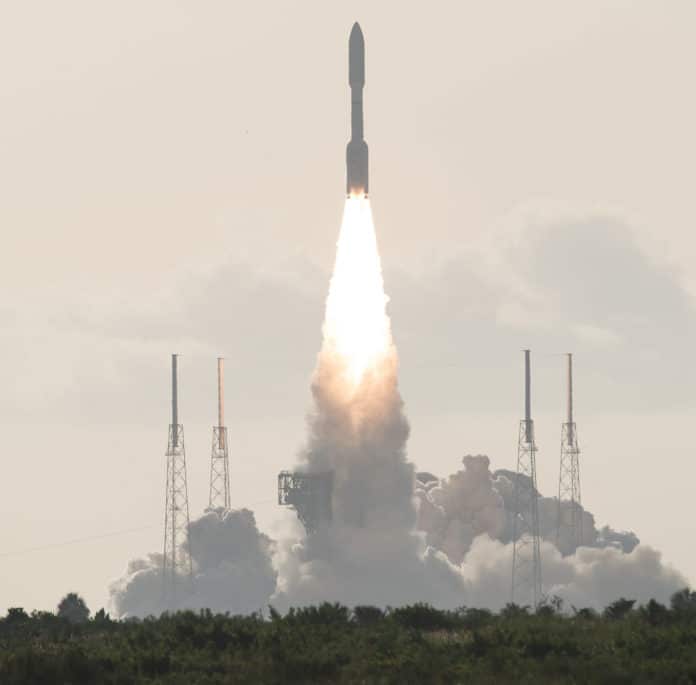On Thursday morning, at 7:50 a.m. EDT, the Mars 2020 Perseverance rover, powered by the United Launch Alliance Atlas V 541 rocket, has lifted off from Space Launch Complex 41 at Cape Canaveral Air Force Station.
The rover is now on its way to embark on its seven-month journey to the Red Planet.
The mission takes the next step by not only seeking signs of habitable conditions on Mars in the ancient past but also searching for signs of past microbial life itself. The Perseverance rover introduces a drill that can collect core samples of the most promising rocks and soils and set them aside in a “cache” on the surface of Mars.
The Perseverance rover carrying seven primary instruments:
- MastCam-Z: An advanced camera system with panoramic and stereoscopic imaging capability with the ability to zoom.
- Mars Oxygen ISRU Experiment (MOXIE): An exploration technology investigation that will produce oxygen from Martian atmospheric carbon dioxide.
- Planetary Instrument for X-ray Lithochemistry (PIXL): An X-ray fluorescence spectrometer that will also contain an imager with high resolution to determine the fine-scale elemental composition of Martian surface materials.
- Radar Imager for Mars’ Subsurface Experiment (RIMFAX): A ground-penetrating radar that will provide centimeter-scale resolution of the geologic structure of the subsurface.
- Scanning Habitable Environments with Raman and Luminescence for Organics and Chemicals (SHERLOC): A spectrometer that will provide fine-scale imaging and uses an ultraviolet (UV) laser to determine fine-scale mineralogy and detect organic compounds.
- SuperCam: An instrument that can provide imaging, chemical composition analysis, and mineralogy.
The Mars 2020 mission addresses high-priority science goals for Mars exploration, including crucial Astrobiology questions about the potential for life on Mars. The mission also provides opportunities to gather knowledge and demonstrate technologies that address the challenges of future human expeditions to Mars.
